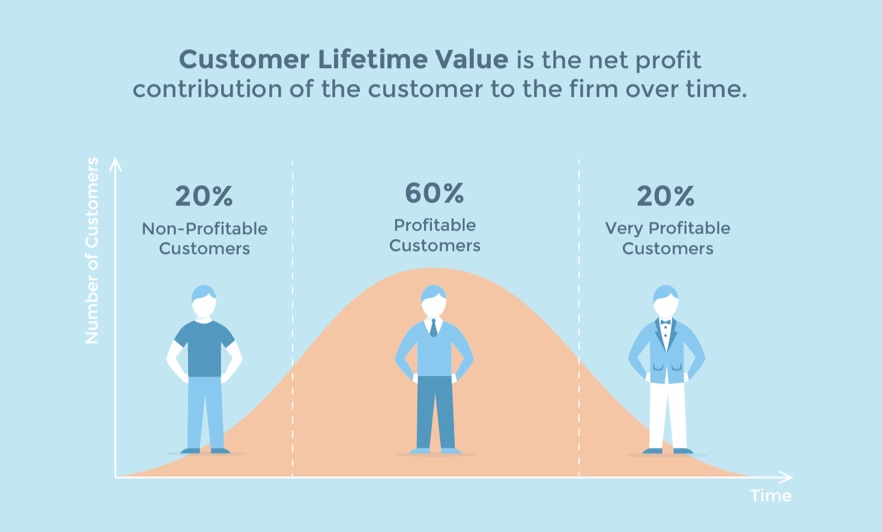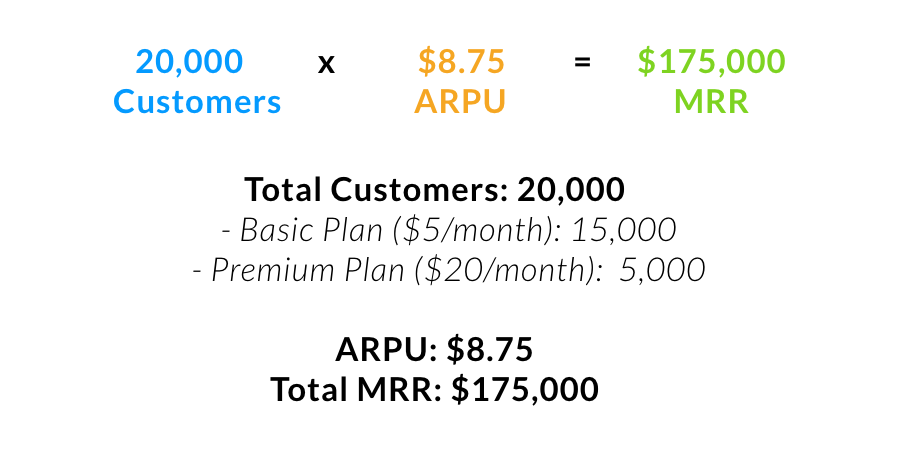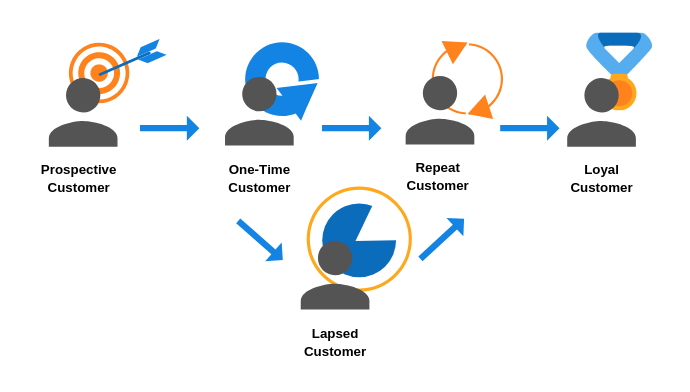From An Analytics Company: Top 8 Subscription Metrics
Subscription-based businesses are based on recurring sales of a product or service in a given period. Therefore, the revenues of these businesses do not depend on one-time purchases but are nurtured from the repetitive nature of subscriptions.
To understand the performance of your subscription business and the behaviors of your subscribers, you need to be in control of different subscription metrics. These metrics help you collect and analyze data about your old and new subscribers, overall revenue, worth of a single subscriber, etc.
This article will look at top subscription metrics that you should check to ensure a successful subscription business.
How To Measure Subscription Metrics?
Before getting into the metrics you should track, let’s first talk about how you can measure them.
Subscription businesses depend on recurring revenue and the best way to maximize your recurring revenue is through understanding what works & what doesn’t work for your subscription business.
✅ How much MRR do you get from a blog post?
✅ How many of the customers a Google Ad campaign brings end up churning?
✅ Does affiliates bring more engaged customers than content brings?
✅ What is the LTV of customers that your blog posts bring?
All these questions are integral to understanding & improving your MRR, but probably you don’t have an answer to them.
However, it’s not your fault: current tools on the market don’t allow you to answer these questions.
We built HockeyStack for you to understand what drives growth for your company.
In short: HockeyStack is a no-code analytics platform that unifies all your data so that you can understand what drives revenue. It’s used on 6600+ companies in 89+ countries.
Click on the image to see it live!

Churn
What is churn?
Churn, churn rate, is one of the most fundamental and insightful metrics for subscription-based businesses. It can be divided into two subcategories as customer churn and revenue churn:
Customer Churn: the rate of customers leaving after a given period of time due to various reasons, such as passive churn and cancellations.
Revenue Churn: the rate of MRR (monthly recurring revenue) lost after a given period of time because of churned users and downgrades.
Churn indicates your weak spots, showing you where and how you are losing customers/revenue. Therefore, understanding churn can help you identify problems in your product and find solutions to improve those spots.
Churned customers are inevitable since you cannot satisfy every user and create value for them. However, you still need to be careful to keep your average churn rate around 2% to 10%, which the lower end of the spectrum indicates a reasonable churn rate.
Why is churn important?
Understanding churn can help you improve overall customer satisfaction and increase customer engagement. Because churn is an indicator of unsuccessful completion of customer lifecycles, seeing where and how you are losing those customers can give you an idea about what you can do to improve. It is beneficial for subscription-based businesses since churn is directly related to the number of customers quitting your product.
To decrease your churn rate, you can increase customer engagement, optimize customer onboarding, change your billing process (collect fees upfront), target inactive users at an early stage, and collect feedback.
Calculating churn can differ according to the method you use (some methods are more advanced and can be adjusted for different scenarios). Still, simple churn can be calculated by the method:
How to calculate churn?
Churned Customers / Total # of Customers
One thing you need to be careful about simple churn is that since churn is calculated for a given period of time while writing down the churned customers, you need to indicate the period of time. To give an example:
Churned Customers: 100 churned customers in a year
Total # of Customers: 1000 customers at the beginning of the year
Churn Rate: 100 / 1000 = 0.1 or 10% annual churn rate
LTV
What is LTV?
In simple words, LTV (customer lifetime value) is the average worth of a customer to the overall revenue. It is an essential SaaS customer retention metric, helping you measure the contribution of a customer throughout the relationship between the customer and product.
LTV not just deals with a single point of interaction but considers every possible interaction point between your customer and product. Therefore, it can change significantly from business to business as the type and number of interactions differ.
Why is LTV important?
LTV is crucial to understand what an average customer can bring to you, meaning how much they can contribute to your revenue. This contribution is also a great indicator of overall customer satisfaction and loyalty. As customer satisfaction increases, your customers become more susceptible to buying products/services/upgrades from you, which increases your revenue.
In addition, with LTV, you can assess the fluctuations in your revenue and analyze the reasons behind them. This can help you identify your weaknesses and offer solutions quickly. Similar to evaluating fluctuations, assessing the impact of a specific marketing strategy can be made by using LTV since the increase in LTV can indicate the changes you are making are working.
How to calculate LTV?
There are two types of LTV: historic LTV and predictive LTV. While historic LTV is calculated according to the past data, predictive LTV is calculated using a special algorithm that runs different tests on historical data.
To calculate historic LTV, you need to know two additional metrics: ARPU and churn. We have already covered the churn rate, but ARPU is a new metric that you need to be familiar with. In literal words, ARPU (average revenue per user) is the average revenue per unit/account. It is beneficial to understand how much a customer brings to your revenue.
LTV formula is:
ARPU / Churn

Product Engagement
What is Product Engagement?
Product engagement is the building block of SaaS businesses, helping you understand how, when, and why users interact with your product. Product engagement at a most basic level shows you the rate and level your users are engaging with your product, indicating strengths and weaknesses in your product design and mechanics. It is especially helpful to understand what drives users to subscribe and/or continue to subscribe to your business.
Unlike others, since product engagement is not a straightforward subscription metric, there is no simple way to calculate it. However, it can be analyzed through different metrics and various combinations of those metrics.
Why is Product Engagement important?
Product engagement is what lies at the basis of your business and the growth of your business. It shows you how many active users you have and how many of them are sources of growth. This gives you the ability to analyze and assess your customer satisfaction and experience with various customer and product metrics.
Product engagement also allows you to identify any problems in your product and/or the way your product engages with your customers. For example, if your product engagement is low, this might show that your UI or onboarding process is not optimized for your customers. On the other hand, high product engagement can indicate that your product is easy to learn, use, and adapt to.
How to calculate Product Engagement?
As I mentioned, there is no simple way to calculate product engagement, but you can easily understand your product engagement through product analytics. Product analytics helps you gather data about your active users while also assessing marketing campaigns and other vital aspects of SaaS businesses. However, it mainly deals with product success and customer success metrics, which helps you analyze your product engagement.

CAC
What is CAC?
CAC (average customer acquisition cost) is the average cost to gain a single new customer. In other words, it is the total average amount that you need to spend to acquire a new customer. CAC includes all the necessary processes and departments you need to acquire new customers, such as the marketing team and welcome emails. All these costs are added up to give you a general idea about how much you need to expense for a possible new customer.
Why is CAC important?
CAC can help you understand how your current marketing and acquiring strategy works and strategize for short-term and long-term projects. Therefore, not putting CAC at the center of your subscription business can have detrimental consequences. For example, if you are unsure what your CAC is, you might not compensate for the churned customers or spend more than LTV.
CAC is also an essential metric to calculate user activation rate, which helps you to understand passive and active users.
How to calculate CAC?
Even though CAC includes a lot of different variables (sources of cost), the CAC formula is pretty straightforward:
Total Amount Spent on All Marketing Efforts (Cost of Sales) / Total Number of Acquired (New) Customers

LTV:CAC
What is LTV:CAC?
LTV:CAC is a combination of two metrics (LTV and CAC) we have talked about, and it is one of the most critical metrics for subscription-based businesses. LTV:CAC ratio is an easy way to understand whether your marketing efforts to acquire new customers are practical or not. It simply tells you about whether acquiring new customers will benefit your revenue in a given period of time, helping you to assess and allocate resources accordingly.
Why is LTV:CAC important?
LTV:CAC gives you an idea about the return of the money you expend to acquire a new customer. Therefore, it helps you understand whether acquiring a new customer will actually benefit your revenue or it will just be a waste of resources. Therefore, calculating LTV:CAC can be crucial for planning marketing strategies for acquiring new customers and/or optimizing current resources for satisfying existing customers.
How to calculate LTV:CAC?
LTV:CAC is a simple ratio of two different metrics. Therefore, to calculate this ratio, you need to know the formulas for both LTV and CAC:
LTV / CAC = (ARPU / Churn) / (Total Cost of Sales / Total # of New Customers)
One crucial point is that to have a successful subscription model, your LTV must always be greater than your CAC.

Conversion Rate
What is Conversion Rate?
Conversion rate is the percentage of visitors that completed/satisfied the desired action to become a customer. In other words, simply it is the percentage of users who did what you wanted them to do. Conversion rate is an indicator of a good UX and simple design. Therefore, it helps you see your website’s strengths and weaknesses and propose possible solutions to improve your UI and UX.
Why is Conversion Rate important?
Conversion rates are easy and effective ways to compare different marketing strategies and channels, helping you identify which strategies create the most value for your business. This enables you to allocate your resources to proper channels, preventing unnecessary expenses and saving time and effort.
In addition, the conversion rate shows you whether your UI is optimized for your users or not. If your website design is simple with clear instructions of how you want your users to engage with your product, your conversion, thus conversion rate, will be high. This, for example, for subscription-based businesses, indicates that visitors are turning into subscribers, contributing to the total revenue.
How to calculate Conversion Rate?
Conversion rate can be simply calculated by:
Total # Visitors Who “Convert” / Total # of Visitors
There might be different versions of this formula changing according to the goal and the industry, but this method is one of the easiest ones to use for the subscription model.

MRR
What is MRR?
MRR (monthly recurring revenue) is one of the most well-known and basic subscription metrics that help you understand SaaS businesses. MRR essentially is the monthly revenue that you generate from subscriptions. In other words, your overall income. Even though it seems like a simple metric, it helps you assess overall business performance and revenue generation, which also gives you a predicted revenue for the following months.
Why is MRR important?
The “recurring” part of the MRR is crucial for subscription businesses since a new customer means a recurring flow of money. Therefore, MRR helps you understand how much you will repeatedly gain in a given period of time and analyze how the cash flow will change in the future. With MRR, you don’t need to worry about one-time sales. Thus, it also helps you understand the fluctuations and differences in your revenue and strategize for the long term.
How to calculate MRR?
MRR has a simple formula:
ARPA (average revenue per account) / Total # of Accounts in a Given Period of Time

Pricing Page Drop-Off Rate
What is Pricing Page Drop-Off Rate?
Pricing page drop-off rate is a unique metric that measures the percentage of possible customers leaving your website after checking on the pricing page. In other words, it shows you whether your pricing page scares or invites potential new customers. This is a helpful metric to understand what drives subscriptions and ways to improve purchases.
Why is Pricing Page Drop-Off Rate important?
Pricing page drop-off rate helps you optimize your pricing page according to your visitors. If your visitors are not converting into customers after engaging with your pricing page, this shows that your pricing page does not urge them to purchase your product.
Most of the time, visitors don’t understand the pricing, or the pricing page is so complicated that they get overwhelmed; thus, they leave without conversion. Therefore, the pricing page drop-off rate can help you design the best pricing page to generate leads and acquire new customers.
How to calculate Pricing Page Drop-Off Rate?
Calculating a drop-off rate might be confusing since it requires different steps, but everything is related to conversions. Therefore, if you can identify the last and first conversion steps, you’re good to go:
(Visits of the Last Conversion Step – Visits of First Conversion Step) / Visits of the First Conversion Step)
optimized for pricing page
Activation Rate
What is Activation Rate?
Activation rate is the percentage of users who successfully complete a phase of the onboarding process. Therefore, the activation rate measures how many of your new users actively engage with your product and become loyal customers. This metric allows you to see whether converted users will actually generate value and helps you assess your onboarding strategies.
Why is Activation Rate important?
Activation rate is an excellent indicator of a successful onboarding process. Thus, it helps you identify any problems in your onboarding and solve them quickly. This enables you to easily and smoothly make your new users loyal customers who are successfully proceeding in their customer life cycles. Activation rate also allows you to manage and identify passive users early on, preventing unnecessary revenue and customer losses.
How to calculate Activation Rate?
The activation rate formula is:
Total # Users Who Complete the Set Phase of Onboarding / Total # Users Who Signed Up
You can see how customers proceed from stage to stage, affecting the activation rate:

Conclusion
Understanding how a subscription business works and checking subscription metrics are essential for a robust business. To manage metrics, therefore, having web analytics tools like HockeyStack can help you a lot in the long run, showing your strengths and weakness in your subscription model and suggesting improvements. It will also allow you quickly and strategically grow without any mishaps.
FAQ
To evaluate a subscription model, you need to both know the basics of subscription models, how they work, and the metrics to manage the model.
The simplest way to calculate subscription growth is to divide the total revenue generated by the subscribers by the total number of subscribers in a given period of time.
Low CAC (customer acquisition cost) means that you are gaining customers at a meager price, which shows that you are spending your resources wisely and strategically.



